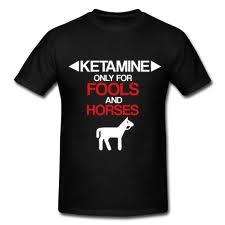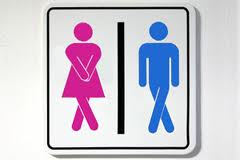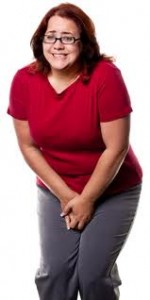
A cystitis caused by abuse of the club drug ketamine looks very much like interstitial cystitis according to a new study done in Taiwan. This drug is especially popular among young people in Asia, where the study urologists practice . Be aware that this is why your doctor may ask you about your recreational drug use, especially if you are young. The article describes the issue and reports specifically on the type of bladder damage ketamine causes. Symptoms include painful urination, fluctuating lower urinary tract symptoms (LUTS), lower abdominal or perineal pain, and impaired functional bladder capacities. Blood and pus in the urine are typical. In addition, bladder ulcers, diffuse bleeding, and low capacity are also typical—similar to IC. Treatment entails stopping abuse and use of pentosan polysulfate (Elmiron) or hyaluronic acid (Cystistat). The outcome of treatment depends on how severe the damage is.
 The FDA approved Botox injection to treat urinary incontinence (UI) in people with neurologic bladder conditions such as spinal cord injury and multiple sclerosis who have over activity of the bladder. The effectiveness of Botox to treat this type of incontinence was demonstrated in two clinical studies involving 691 patients. Both studies showed statistically significant decreases in the weekly frequency of incontinence episodes in the Botox group compared with placebo.
The FDA approved Botox injection to treat urinary incontinence (UI) in people with neurologic bladder conditions such as spinal cord injury and multiple sclerosis who have over activity of the bladder. The effectiveness of Botox to treat this type of incontinence was demonstrated in two clinical studies involving 691 patients. Both studies showed statistically significant decreases in the weekly frequency of incontinence episodes in the Botox group compared with placebo.
Injection of the bladder with Botox is performed using cystoscopy, a procedure that allows a doctor to visualize the interior of the bladder. Cystoscopy may require general anesthesia. The duration of the effect of Botox on urinary incontinence in patients with bladder overactivity associated with a neurologic condition is about nine months.In addition to its use to improve the appearance of facial frown lines, Botox also is FDA-approved to treat chronic migraine headaches, certain kinds of muscle stiffness and contraction, severe underarm sweating, abnormal twitch of the eyelid and a condition in which the eyes are not properly aligned. While not a FDA-approved for the treatment of interstitial cystitis (IC), the use of Botox to treat IC is becoming more common.
Will IC soon be added to this list of FDA-approved indications? Stay tuned.
8/25/2011 Source: Interstitial Cystitis Association
 There is a lot of information on the web promoting various diets for interstitial cystitis (IC), a painful bladder condition with many different symptoms. Both the IC clinical guidelines of the American Urological Association (AUA) and the chronic pelvic pain practice bulletin of the American College of Obstetrical Gynecology (ACOG) recommend dietary modification as a useful approach for helping to manage IC and chronic pelvic pain.
There is a lot of information on the web promoting various diets for interstitial cystitis (IC), a painful bladder condition with many different symptoms. Both the IC clinical guidelines of the American Urological Association (AUA) and the chronic pelvic pain practice bulletin of the American College of Obstetrical Gynecology (ACOG) recommend dietary modification as a useful approach for helping to manage IC and chronic pelvic pain.
However, research into the link between IC and food is very limited. At this time, there is no special “IC Diet.”
IC affects 3-8 million women in the U.S. Men also have it but to a smaller degree, an estimated 1-4 million. However, in men, it is often mistaken for chronic prostatitis. Research has found that there is a lot of variability among IC patients. Some people with IC report that certain foods appear to irritate their bladders and cause painful IC flares. And they find that making a few strategic changes to what they eat and drink can help to control IC symptoms including pain, frequency, and urgency. Other IC patients find that diet does affect their flares.
Some 2,100 IC patients responded to a survey conducted by the Interstitial Cystitis Association (ICA) on complementary and alternative medicines (CAM). Diet topped the list of helpful CAM treatments. The ICA distinguished between looking for and eliminating your individual food triggers and strictly eliminating all the foods on a given “IC Diet” food list. Results were the same in both cases, strongly suggesting that you can eat happy and healthy with a wide variety of items in your diet and still keep your symptoms at bay. The survey also found that newly diagnosed patients find diet changes significantly more helpful than long-standing IC patients.
The ICA recommends eating a healthy, balanced diet. Meet with a registered dietitian (RD) to learn more about how to identify which foods and beverages might bother your IC. Also, find out if your health insurance covers the cost of nutrition counseling.
What We Know about IC & Diet
What to Eat—and What Not to Eat
Differing Approaches on IC & Diet
Source: Interstitial Cystitis Association
